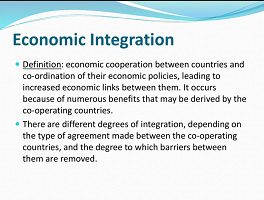Knowledge management in a company its purpose importance and Examples
Knowledge management
The knowledge management (KM) is the art of turning what few know of something that can be shared.
After all, companies build their “way of doing it” based on their own daily experiences.
But there is no point in having a vast repertoire if it is not disseminated so that everyone can enjoy .
In this sense, knowledge management is a beneficial strategy for companies that want to evolve and generate value for their human resources .
knowledge management in companies?
“Knowledge management is a discipline that promotes an integrated approach to identifying, capturing, evaluating, retrieving and sharing all of a company’s information assets .
These assets may include databases, documents, policies, procedures, knowledge and experience not previously captured in individual workers.”
This concept was developed at KM World, a North American reference on the subject. More simply, we define knowledge management as the sharing of experiences and know-how.
Thus, what was previously owned only by a few individuals, now has access to everyone in the organization.
Managing knowledge in companies makes employees keep up to date and interested in their tasks.
In this way, they feel motivated to seek professional development .
What’s the purpose?
The basic premise of knowledge management is “learning from mistakes”.
Applying the technique in the company allows managing failures and using the results in future decisions , always considering what we have learned in previous experiences.
The objective of GC is to identify which knowledge the team dominates and, among them, which ones have been transformed into processes.
It is also worth finding out if they started from a single idea that became a management practice.
What is it used for?
The knowledge management seeks to connect generation sources with knowledge of application requirements .
On one side is the one who knows, on the other is the one who needs to know. To meet this goal, GC must complete four steps:
- capture knowledge: companies must create “deposits” of information, whether documents, memos, reports, presentations, manuals or articles. They must be easily redeemed on demand;
- facilitate access to knowledge: people must easily access and transfer knowledge;
- improve the organizational environment: create policies that encourage the sharing of knowledge among employees;
- Valuing available knowledge: Certain companies include intellectual capital in their balance sheets. And others use this asset to generate new forms of revenue, cost savings and innovation.
Ultimately, knowledge management enables companies to generate value, increasing their competitiveness in the market.
And this benefit can be proven in numbers. American Ask Spoke points out that GC can increase productivity by up to 40%.
Therefore, investing in knowledge management as a strategy has many benefits. Follow up!
Improves communication
The information sharing allows you to discover what skills and experiences acquired in the career can connect.
Thus, leaders and team members align their actions and communication becomes more efficient, reducing noise.
Maintains organizational knowledge
By preserving the knowledge of the company, management manages to keep employees and managers together , using the information in favor of the organization.
In this sense, questions about standard processes can be compiled into a manual for quick access, for example.
Increases productivity
Because they are shared, everyone has free access to information . In this way, the work of teams gains in productivity.
a study carried out by the Deloitte European Workforce Survey pointed out that, in the employees’ view, companies that prioritize knowledge management are more competitive in the market and generate more value for customers.
Deloitte’s research also presents other benefits of using knowledge management:
- reduces rework and brings innovation to the business thanks to constant collaboration;
- expands employee learning ;
- improves decision making and facilitates access to specific information;
- increases customer satisfaction , as it reduces mismatched information;
- it qualifies the processes with the use of data and the exchange of experiences;
- increases the company’s intellectual capital due to knowledge sharing;
- the application of training increases employee engagement ;
- when aligned with a benefits policy and a career plan, it promotes the attraction and retention of talent .
How important is knowledge management?
Being aware of the knowledge stored over the years allows organizing information and transforming it into:
- improvement actions;
- more dynamic processes;
- activities;
- products with higher quality;
- qualified service.
Therefore, the knowledge acquired by managers and employees is the basis for the qualification of the company as a whole.
In this sense, we must consider external factors such as competition, market trends, cultural influences, innovations and technological changes.
Finally, gathering knowledge, condensing it into learning, sharing these experiences and transforming them into effective actions represents the real importance of KM for companies.
Examples of Knowledge management in a company
Learning from successful actions is the best way to reproduce good examples. Know successful cases in knowledge management.
Petrobras
In Brazil, Petrobras applies lessons learned techniques, in line with organizational intelligence. In the company, KM is a process aimed at creating value for the business.
Employees are encouraged to identify, create, preserve, share and apply knowledge in processes and projects.
One example is the Petrobras Mentor Program, created two decades ago. He proposes that older professionals transmit structured knowledge to younger ones.
With this and other actions, the company was classified as one of the reference companies in Knowledge Management in the Federal Public Administration .
world Bank
An example of a non-profit organization, the World Bank implemented the decentralization of operations to strengthen knowledge management.
Before, all processes went through Washington, a fact that generated high costs and delays in decisions.
To solve the problem, the World Bank bet on the formalization of knowledge and started to make it available among local agencies.
In this sense, new skills emerged from the discussions and opinions of those involved.
General Electric
By creating the Corporate Executive Council, GE provided one of the greatest examples of KM implementation.
With the board, the multinational’s executives share information and qualify decision-making.
The CEC is formed by General Electric leaders and promotes annual meetings lasting two days. During the forums, participants share best practices and discuss the company’s successes.
On occasion, failures and unsuccessful experiences are also analyzed by GE executives. The actions of the Executive Board promote the continuous improvement of business management.
Amazon
The company has applied knowledge management since its foundation in the 1990s. At Amazon, information from each unit is available to all managers.
In this sense, the technology multinational was able to use the same successful formulas applied in book sales to market a multitude of items.
The shared knowledge makes Amazon a company that has perfected its product catalog, capable of selling everything from household items to gym equipment.
United Nations
United Nations knowledge management is practiced in peace and humanitarian relief missions.
For this, the UN implemented systems for collecting, analyzing and disseminating information to generate benefits in other initiatives.
Building on previous experiences, GC’s focus is on solving challenges using organizational learning.
It comes from networking, talent management and public engagement.



